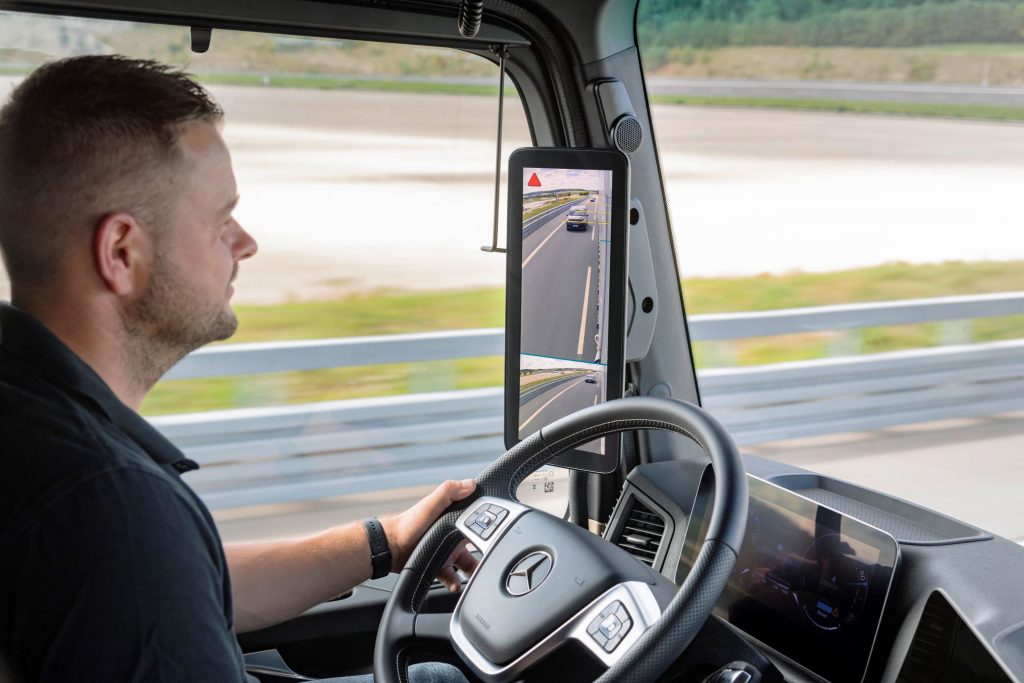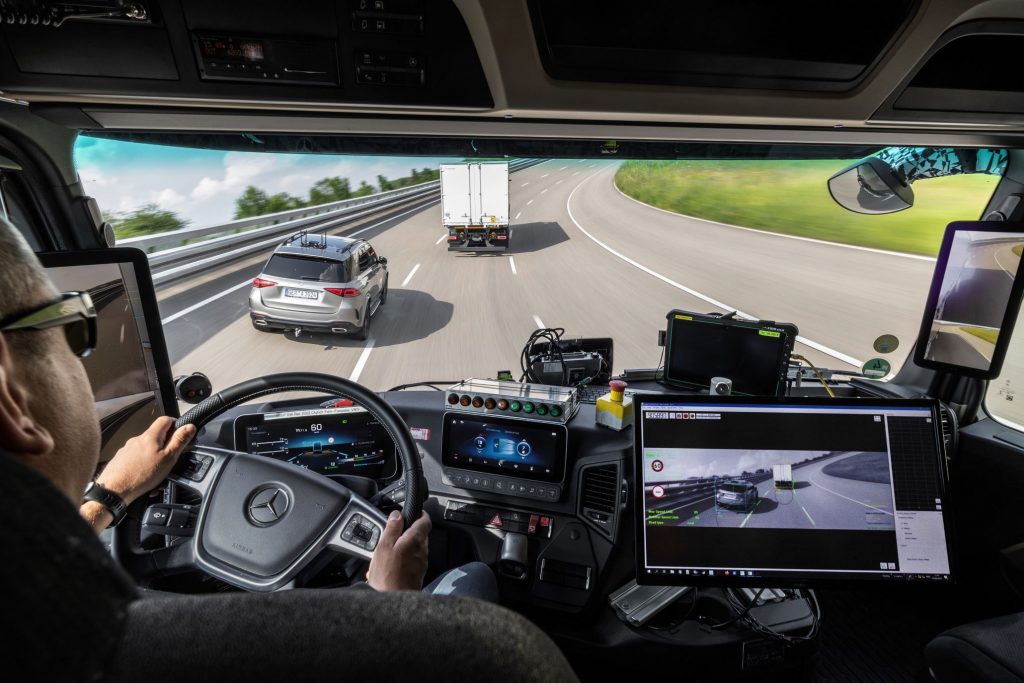
Earlier this week, Mercedes-Benz Trucks unveiled the series production version of its first battery-electric long-haul truck, a presentation led by Karin Rådström, CEO of Mercedes-Benz Trucks and Member of the Board of Management of parent Daimler Truck AG. With the eActros 600, the truck OEM is advancing its vision of accident-free driving with safety assistance systems that go beyond the legal requirements in many areas. This applies to the General Safety Regulation adopted by the EU Commission that from mid-2024 prescribes the addition of systems as standard equipment for all new vehicles.
The safety concept of the new truck is based on the further development of the OEM’s safety assistance systems upgraded with a new electronics platform with sensor fusion that merges radar and camera data for a better view of the front and side. The platform offers 20 times greater data processing of six primary sensor inputs. Five radars, four short-range and one long-range, and a windshield-mounted multifunction camera to cover an angle of 270 degrees around the vehicle.
The significantly updated suite of assistance systems includes Active Brake Assist 6 (ABA 6), Frontguard Assist, Active Sideguard Assist 2 (ASGA 2), and Active Drive Assist 3 (ADA 3). The greater data processing and sensor networking capabilities mean valuable time can be gained to react as quickly as possible to traffic conditions where necessary and ideally to avoid accidents completely or at least mitigate their consequences.
The sensor fusion for the 270-degree view in particular benefits the ABA 6. The improved hazard recognition and multiple-lane monitoring mean that the emergency brake assistance system can react more quickly in critical situations such as changing lanes and traffic jams typical on highway curves. ABA 6 can react not only to moving but also stationary persons and cyclists, whether in the same lane, crossing, or oncoming, with automated emergency braking up to a vehicle speed of 60 km/h, according to Tilman Morlok, Project Lead, for the eActros 600.
The new Frontguard Assist can warn the driver visually and acoustically of vulnerable road users directly in front of the truck, especially in complex situations such as when pulling away or at junctions.
For the ASGA 2 system, the sensor fusion increases the monitoring range for the length of the tractor/trailer combination by up to 7 m to the front, 30 m to the rear, and 4.25 m to the right—and it adds a new monitoring zone on the driver’s side. The earlier ASGA 1 monitored the combination length plus 2 m to the front, up to 1 m to the rear, and up to 3.75 m only to the right adjacent to the vehicle.
The extension of the viewing angle to the left adds significant capabilities to the ADA 3, allowing SAE Level 2 “semi-automated” driving. The third-generation system can automatically guide the truck back into its lane if there is a risk of collision when, for example, the driver wants to steer off to the left to overtake but has missed a vehicle approaching from behind.

In September, parent Daimler Truck demonstrated its intensive testing for the new and evolved safety assistance systems at its EVZ development and testing center in Wörth am Rhein in Germany. Up to 60 Daimler Truck vehicles have undergone endurance testing of the systems there as well as in Finland, Spain, Japan, and on the test track of Daimler Truck North America in Madras, OR. The mileage covered in the process will amount to around 5 million km between 2020 and the end of 2023. The assistance systems will be used not only in the eActros 600 but also in other Daimler trucks and buses from April 2024.
“Tests like those in Wörth are of pivotal importance to us in order to incorporate the results and findings gained from them into optimizing existing driver assistance systems or the development of new safety features—from the small Atego to special-purpose trucks as well as buses or touring coaches,” said Mustafa Üstertuna, Head of Software and Electronics at Daimler Truck.
In parallel with those developments, Daimler Truck subsidiary Torc Robotics is pioneering SAE Level 4 autonomous truck technology for long-haul applications. The self-driving unit recently announced its second carrier pilot collaboration (after Schneider in September 2022) with C.R. England for temperature-controlled loads. The announcement follows Torc’s recent acquisition of Algolux for its expertise in computer vision and machine learning.

